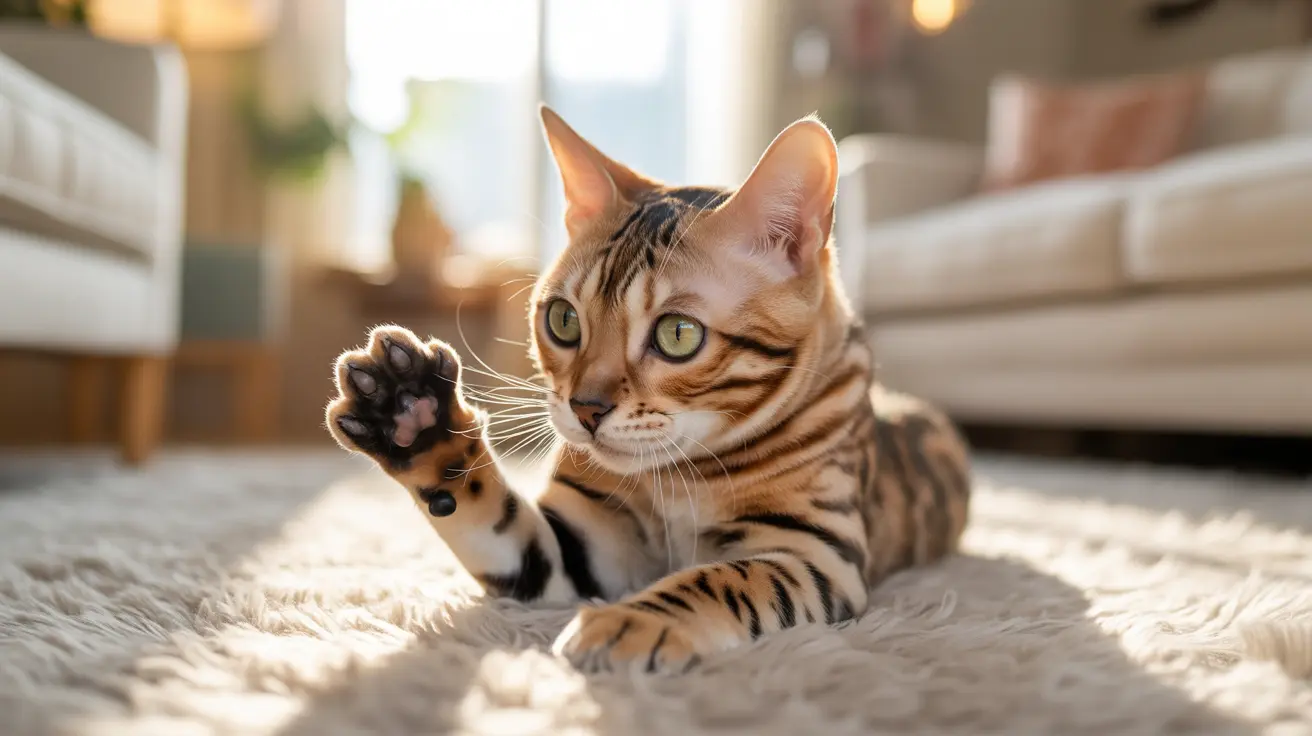Cat paw colors are a fascinating aspect of feline anatomy that can tell us much about our pets' health and genetics. From the adorable pink pads of white kittens to the striking black pads of darker cats, these small but important features serve multiple purposes and can change throughout a cat's life. Understanding these changes is crucial for monitoring your cat's well-being.
In this comprehensive guide, we'll explore the various factors that influence cat paw colors, what different changes might mean, and when you should be concerned about color variations in your feline friend's paw pads.
The Natural Rainbow of Cat Paw Pads
Cat paw colors are primarily determined by genetics and closely correlate with a cat's coat color. Most kittens are born with pink pads that may change as they mature. Black cats typically develop black pads, while orange or white cats usually maintain their pink pads. Multicolored cats often sport what enthusiasts lovingly call "jellybean toes" - paw pads of varying colors on the same foot.
The pigmentation process is controlled by the same genetic factors that determine coat color, which explains why there's such a strong correlation between fur and paw pad coloring. This natural variation is completely normal and adds to each cat's unique characteristics.
Understanding Normal Color Changes
As cats age, their paw pads may undergo several normal color changes. Kittens' pink pads often darken as they mature, especially in cats with darker fur. This gradual change is perfectly natural and shouldn't cause concern. Some cats may also experience seasonal variations in pad color, with slight darkening or lightening throughout the year.
When to Be Concerned About Paw Pad Changes
While many color changes are harmless, certain variations can signal health issues requiring attention. Watch for:
- Sudden paleness or whitening (possible anemia)
- Redness or inflammation (potential infection or injury)
- Purple or blue tinting (circulation issues)
- Dark spots appearing suddenly (possible melanoma)
- Swelling accompanied by color changes (infection or injury)
Common Medical Conditions Affecting Paw Color
Several health conditions can impact paw pad coloration:
- Plasma cell pododermatitis (pillow foot)
- Bacterial or fungal infections
- Autoimmune conditions
- Vitiligo
- Circulation problems
- Allergic reactions
Monitoring and Maintaining Healthy Paw Pads
Regular inspection of your cat's paw pads can help catch potential problems early. Keep these tips in mind:
- Check paw pads weekly for changes in color or texture
- Clean pads gently if dirty
- Watch for excessive licking or limping
- Monitor for cuts or abrasions
- Keep nails properly trimmed to prevent pad stress
Frequently Asked Questions
Why do cat paw pads come in different colors and how is this linked to their fur color?
Cat paw pad colors are directly linked to their genetic makeup, which also determines their fur color. The same melanin that colors their coat affects their paw pads, which is why black cats typically have black pads while white cats have pink ones.
What health issues can cause a sudden change in my cat's paw pad color?
Sudden paw pad color changes can be caused by anemia, infections, injuries, circulation problems, or immune system disorders. Any abrupt change should be evaluated by a veterinarian.
How can I tell if my cat's paw pad color change indicates an injury or infection?
Injuries or infections typically cause redness, swelling, or darkening accompanied by signs of pain, limping, or excessive licking. The affected area may feel warm to the touch or show visible damage.
What is plasma cell pododermatitis (pillow foot) and how does it affect cat paw pad appearance?
Plasma cell pododermatitis causes swelling and softening of the paw pads, making them appear puffy and often darker in color. The condition can cause the pads to develop purple coloration and may include visible cracks or ulcers.
When should I take my cat to the vet if I notice their paw pads are turning pale or changing color?
Seek veterinary care if you notice sudden color changes, especially paleness, or if changes are accompanied by other symptoms like lethargy, limping, or changes in behavior. Immediate attention is needed for any purple or blue coloration, which could indicate circulation problems.
Conclusion
Cat paw colors are more than just an aesthetic feature - they can be important indicators of your pet's health. While many color variations are normal and genetically determined, understanding what changes might signal problems helps ensure proper care. Regular monitoring and prompt attention to concerning changes will help keep your feline friend healthy and comfortable.






